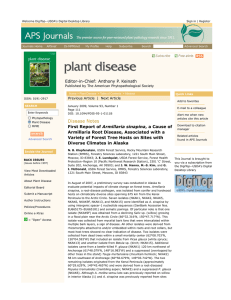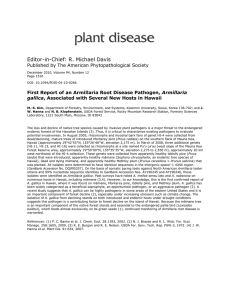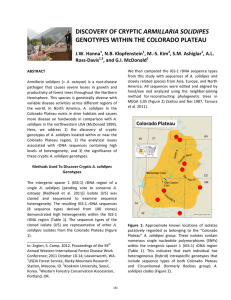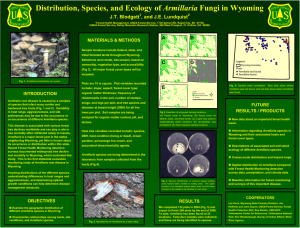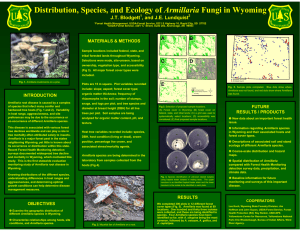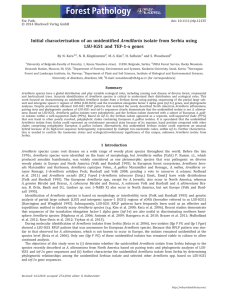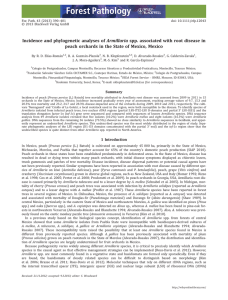Determination of Suitable Climate Space Armillaria ostoyae Cascades John W. Hanna
advertisement
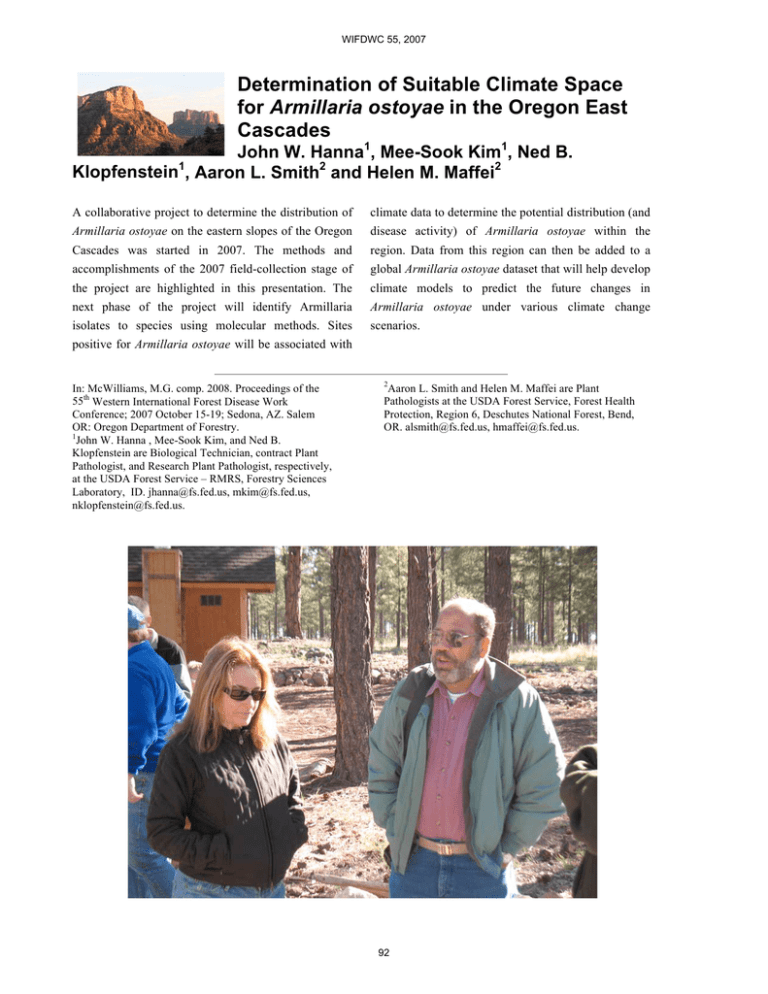
WIFDWC 55, 2007 Determination of Suitable Climate Space for Armillaria ostoyae in the Oregon East Cascades John W. Hanna1, Mee-Sook Kim1, Ned B. Klopfenstein1, Aaron L. Smith2 and Helen M. Maffei2 A collaborative project to determine the distribution of climate data to determine the potential distribution (and Armillaria ostoyae on the eastern slopes of the Oregon disease activity) of Armillaria ostoyae within the Cascades was started in 2007. The methods and region. Data from this region can then be added to a accomplishments of the 2007 field-collection stage of global Armillaria ostoyae dataset that will help develop the project are highlighted in this presentation. The climate models to predict the future changes in next phase of the project will identify Armillaria Armillaria ostoyae under various climate change isolates to species using molecular methods. Sites scenarios. positive for Armillaria ostoyae will be associated with In: McWilliams, M.G. comp. 2008. Proceedings of the 55th Western International Forest Disease Work Conference; 2007 October 15-19; Sedona, AZ. Salem OR: Oregon Department of Forestry. 1 John W. Hanna , Mee-Sook Kim, and Ned B. Klopfenstein are Biological Technician, contract Plant Pathologist, and Research Plant Pathologist, respectively, at the USDA Forest Service – RMRS, Forestry Sciences Laboratory, ID. jhanna@fs.fed.us, mkim@fs.fed.us, nklopfenstein@fs.fed.us. 2 Aaron L. Smith and Helen M. Maffei are Plant Pathologists at the USDA Forest Service, Forest Health Protection, Region 6, Deschutes National Forest, Bend, OR. alsmith@fs.fed.us, hmaffei@fs.fed.us. 92

